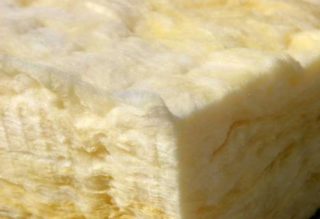Often a situation arises when you have to spend the night in a makeshift, equipped in the country. It happens that some time in the country is spent in winter. In this case, the change house should be insulated.
Requirements for heaters for change houses
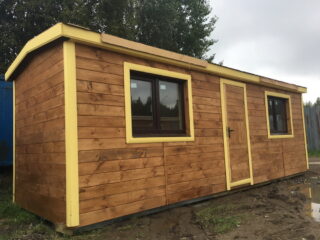
Not all materials are suitable for thermal insulation of change houses. The requirements for them are as follows:
- incombustibility or low flammability;
- health safety, since a person spends a lot of time in such a temporary hut;
- wear resistance;
- efficiency - the change house is not large in size and a thick layer of insulation significantly reduces its area.
It is necessary to select insulation taking into account the material of the change house. The metal box does not hold heat, in order to insulate it, an effective heat insulator is used. It is easier to insulate a wooden change house, since wood perfectly retains heat.
Insulation materials
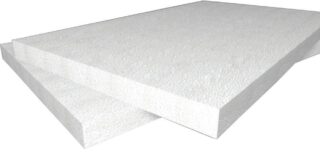
Insulation of a change house for living in winter is made using the following materials.
- Polyfoam is a combustible material, although it is resistant to ignition. Its plus is its very high efficiency. A 5 cm layer of foam is enough to replace 1 brick masonry. The material is produced in the form of plates, it is mounted very easily - it is simply glued to the walls. Polyfoam is not afraid of water, does not lose its properties after getting wet, is not susceptible to mold or rot. Polyfoam is recommended to sheathe metal change houses. The incombustibility of the metal compensates for this disadvantage in the foam and does not allow a fire to flare up.
- Mineral wool and basalt slabs are a loose, lightweight material with excellent thermal insulation properties. It is a collection of fine fibers made of stone. Mineral wool is made from slag and other waste - it is less durable and resistant to wear, since the fibers are thinner and shorter. Basalt is made from hard rocks - the material is very durable and is not so afraid of water as mineral wool. The main drawback of the material: when wet, the insulation loses its properties and after drying they do not return.
Fiberglass insulation crumbles heavily and causes allergies Fiberglass - made according to a similar principle, but the source is glass waste. Glass fibers are long, so that the slabs made of them have better thermal insulation properties. In addition, glass is absolutely not afraid of moisture. However, it is only necessary to work with it in a respirator: at the slightest pressure, part of the fiber crumbles, and glass dust, getting on the mucous membrane and into the lungs, can lead to severe poisoning and injuries.
- Polyurethane foam - available in 2 types. In the form of a slab, it is similar in properties to polystyrene, but has a high ability to retain heat. In liquid form, polyurethane foam is applied to walls by spraying. The material foams in air, forms a loose but hard protective layer and hardens quickly. Such insulation is also not afraid of water, burns with great difficulty, self-extinguishes.
To apply polyurethane foam in liquid form, you need special equipment.
Do-it-yourself insulation
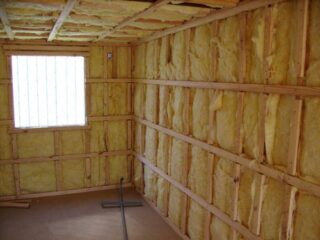
Insulation for the change house is selected taking into account what exactly needs to be insulated: floor, ceiling, door.
- The walls are insulated using the same technology for any type of material, except for liquid polyurethane foam.
- A wooden frame is attached to the surface of the wall - a crate.
- Lay a waterproofing agent - a film, a membrane.The material should cover not only the walls, but also the crate itself.
- Insulation is placed in the cavity between them: foam plates, mineral wool, expanded polystyrene. Fastened with staples.
- Cover the insulation with a vapor barrier film and sheathe it with finishing material.
For a metal change house, plate heaters are more often used, like polystyrene or polyurethane foam. For a wooden makeshift, it is better to take mineral wool or basalt fiber: foam is vapor-proof and with such insulation, the tree eventually begins to bloom and rot.
Insulation of the floor of the change house is carried out in the same way. However, here you can use bulk insulation - expanded clay, plastic chips. It's cheaper.
For sheathing the ceiling, they take the same insulation as for the walls. However, if the walls can be insulated from the inside and outside, then the ceiling is insulated only from below.
In a change house, very simple window structures with 1 glass are usually installed. Insulate by filling with silicone. To do this, first dismantle the glazing bead, and fill the gap with sealants. A more reliable option is to install a double glazing.
The door is insulated with the same material as the walls. But in addition to installing the insulation on the door leaf, it is necessary to seal the joint between the sash and the door frame. To do this, the canvas is pasted over with sealing rubber around the perimeter.
Change house heating
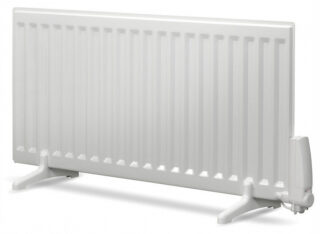
Heating of a change house can only be done with an electric heater. Preference is given to oil coolers. At high intensity, such a system turns out to be more profitable in a small area. The radiator retains heat for a long time, burns less oxygen and distributes heat in all directions.
The convector is worse: it warms up the room faster, but also burns more air.
Insulation of the change house outside
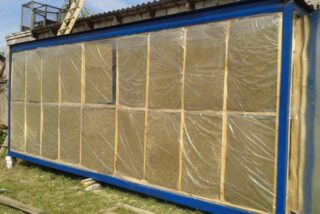
Warming of a metal or wooden change house is also possible outside. This option is beneficial in that it does not reduce the internal area of the building.
The step-by-step instructions for thermal insulation from the outside differ only in sequence. At the first stage, the frame is also erected. However, then a layer of not a waterproofing agent is laid, but a vapor barrier. The insulation is fixed in the cavity between the racks of the crate and is covered with a waterproofing film on top to protect it from rain and snow.
Walls are sheathed outside with clapboard, plastic siding, and other inexpensive finishing materials.

